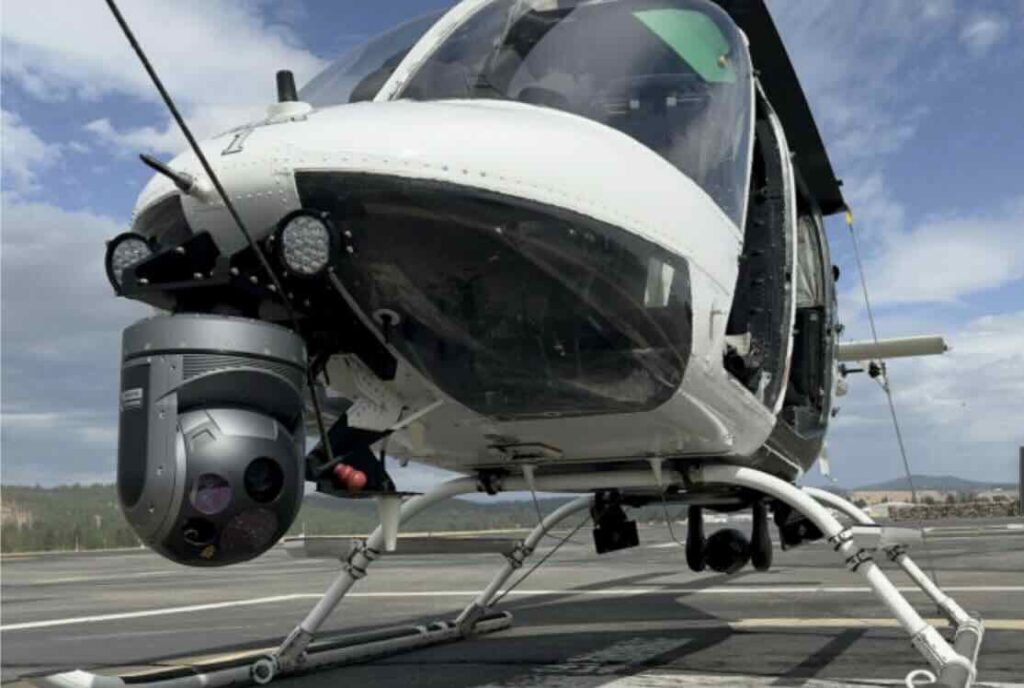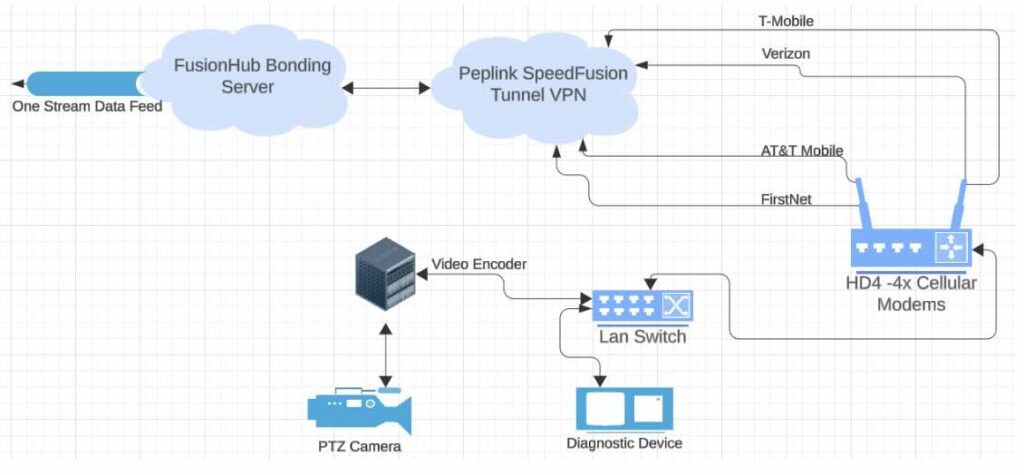
Table of Contents
Staying connected is more important than ever—whether you’re on the ground or in the air. When a customer approached us with a unique challenge, looking for a way to maintain reliable cellular connectivity for an aircraft, we knew we had to think outside the box. The task seemed simple on the surface, but as we dove deeper, it became clear that the solution required more than just basic connectivity—it needed flexibility, reliability, and the ability to scale.
The Initial Challenge: Maintaining a Stable 2-3 Mbps Upload Speed at Low Altitudes
The customer had a very specific requirement: they needed to ensure that a 2-3 Mbps upload speed remained active and stable while in flight. The aircraft, which only flew at low altitudes, created a unique challenge. At these altitudes, the aircraft’s cellular connection has to handle rapid handoffs between towers while maintaining stable connectivity—a common issue for any mobile network, but particularly challenging in flight.
Given the emphasis on upload speeds, this added an extra layer of complexity. Upload speeds are generally more difficult to maintain on mobile networks than download speeds, especially when moving at high speeds or flying in an aircraft at low altitudes, where the connection is constantly changing from tower to tower.
The idea was to maintain reliable cellular connectivity for an aircraft over multiple cellular networks, ensuring continuous service even when moving between towers, while operating with minimal latency. While the requirement for 2-3 Mbps seemed straightforward, the added complexity of flying at low altitudes—and the associated signal handoff challenges—required a more robust solution.
Initially, we began testing various solutions with our customer to maintain the 2-3 Mbps upload connection on their chosen cellular providers, including AT&T, FirstNet, T-Mobile, and Verizon. During these initial tests, we discovered that the customer’s setup wasn’t providing the level of performance they needed, especially when it came to minimizing latency and optimizing their upload speed. This is where our team’s expertise came into play.
A Better Solution That None of Us Expected
As we worked closely with the customer, performing multiple tests and assessments, we realized that the real issue wasn’t just maintaining a stable 2-3 Mbps upload connection, but rather overcoming the high latency that typically comes with cellular WAN connections in an aircraft. Latency, as we know, can severely impact network performance, especially for applications that require low-latency connections, such as remote work or real-time communications.

This discovery led us to explore options to not only maintain the required upload speed but also to reduce latency in the customer’s setup. The solution? SpeedFusion VPN, a powerful tool that we use to aggregate multiple cellular connections and ensure high-speed, low-latency performance across multiple networks.
By using SpeedFusion’s advanced tunneling technology, we were able to aggregate connections from AT&T, FirstNet, T-Mobile, and Verizon SIM cards, allowing the customer to seamlessly switch between networks without experiencing the usual drop in speed or increase in latency. This would provide better cellular connectivity for an aircraft, or any application needing to rely on cellular connections.
12-16 Mbps Upload Speeds Performance
Through SpeedFusion, we were able to unlock an unexpected benefit for our customer: upload speeds of 12-16 Mbps—far exceeding the initial 2-3 Mbps target. This was made possible by aggregating several cellular connections across multiple networks, creating a much more stable and robust connection.

Even more importantly, we were able to configure the system to eliminate high latency. By using advanced VPN tunnel settings, we ensured that the WAN connection, despite being cellular-based, stayed outside the typical high-latency thresholds. The result was a vastly improved experience for the customer, who now had a more reliable, faster, and lower-latency upload connection than they ever thought possible, even while flying at low altitudes.
How Our Team Solved an Unseen Problem
While our customer initially came to us with a simple requirement, our team’s expertise and problem-solving capabilities allowed us to uncover and address an issue that the customer didn’t even know they had: latency and unreliable cellular connectivity for an aircraft. We didn’t just meet their initial request. Our team exceeded their expectations and provided a much more robust solution that opened up new possibilities for them.
This experience is a great example of how 5GStore doesn’t just provide products, but also offers customized solutions to real-world problems. Our team’s ability to think critically, test various options, and ultimately discover a scalable, high-performance solution is what sets us apart in the industry.
A Game-Changing Connectivity Solution
In summary, the solution we provided for our customer not only helped them meet their initial 2-3 Mbps upload requirement but also opened the door to much better performance, with upload speeds of 12-16 Mbps and ultra-low latency. Through the power of SpeedFusion VPN and our expertise in cellular network aggregation, we helped them achieve reliable cellular connectivity for an aircraft that they didn’t even know was possible, even with the limitations of flying at low altitudes.
If you’re facing similar connectivity challenges, whether in aircraft or remote locations, we encourage you to reach out to our team. We’ll work with you to understand your unique needs and design a solution that will keep you connected faster, more reliably, and with better performance than you ever expected.

